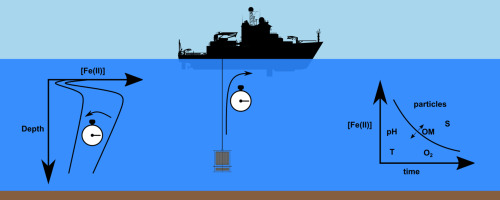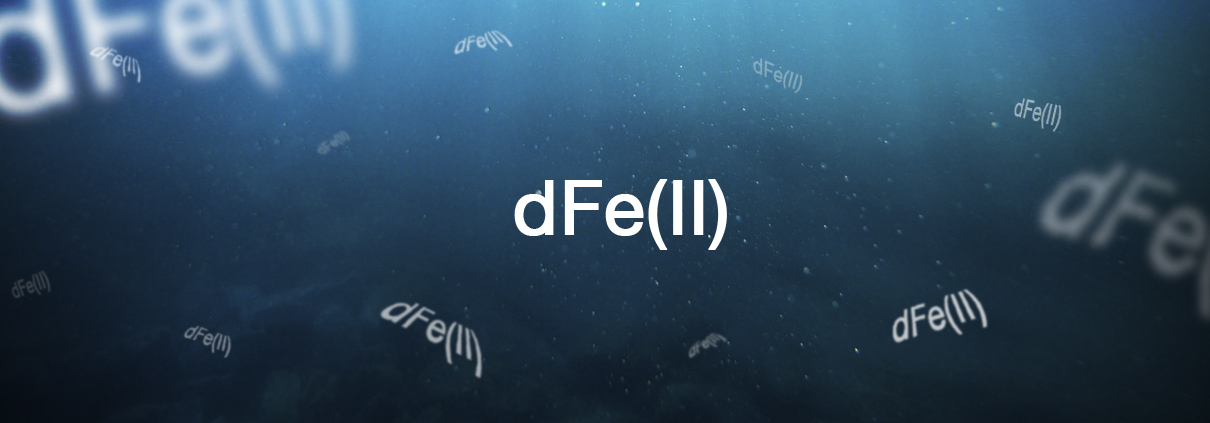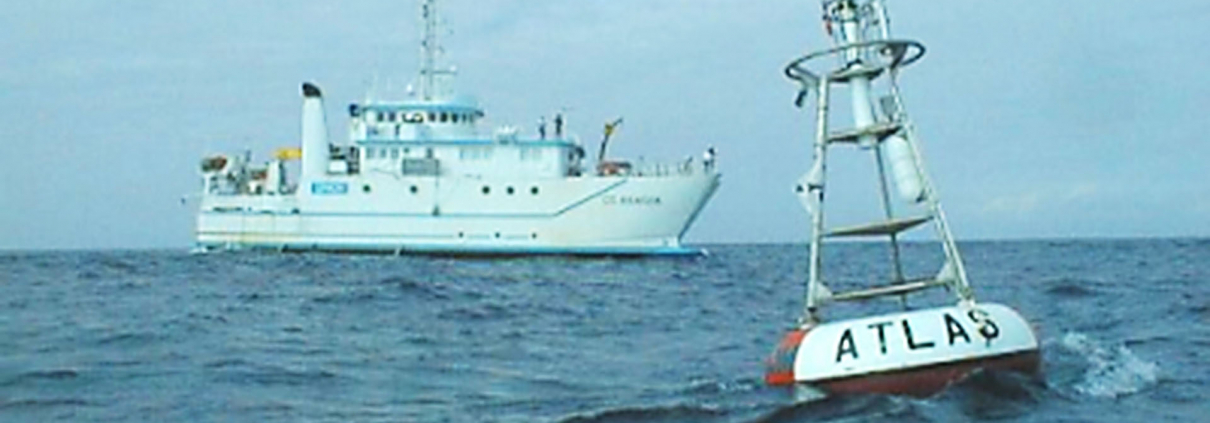The unaccounted dissolved iron (II) sink: Insights from dFe(II) concentrations in the deep Atlantic Ocean
Abstract
Hydrothermal vent sites found along mid-ocean ridges are sources of numerous reduced chemical species and trace elements. To establish dissolved iron (II) (dFe(II)) variability along the Mid Atlantic Ridge (between 39.5°N and 26°N), dFe(II) concentrations were measured above six hydrothermal vent sites, as well as at stations with no active hydrothermal activity. The dFe(II) concentrations ranged from 0.00 to 0.12 nmol L−1 (detection limit = 0.02 ± 0.02 nmol L−1) in non-hydrothermally affected regions to values as high as 12.8 nmol L−1 within hydrothermal plumes. Iron (II) in seawater is oxidised over a period of minutes to hours, which is on average two times faster than the time required to collect the sample from the deep ocean and its analysis in the onboard laboratory. A multiparametric equation was used to estimate the original dFe(II) concentration in the deep ocean. The in-situ temperature, pH, salinity and delay between sample collection and its analysis were considered. The results showed that dFe(II) plays a more significant role in the iron pool than previously accounted for, constituting a fraction >20 % of the dissolved iron pool, in contrast to <10 % of the iron pool formerly reported. This discrepancy is caused by Fe(II) loss during sampling when between 35 and 90 % of the dFe(II) gets oxidised. In-situ dFe(II) concentrations are therefore significantly higher than values reported in sedimentary and hydrothermal settings where Fe is added to the ocean in its reduced form. Consequently, the high dynamism of dFe(II) in hydrothermal environments masks the magnitude of dFe(II) sourced within the deep ocean.

Highlights
- Considering oxidation, open ocean iron (II) concentrations are below 0.2 nmol L−1.
- The highest measured iron (II) concentration was 69.6 nmol L−1 at the Rainbow vent.
- In the open ocean iron (II) account for 20 % of the dissolved iron pool.
- Oxygen variations within OMZ account for 60 % of iron(II) oxidation variability.
Reference
Gonzalez-Santana, D.; Lough, A. J. M.; Planquette, H.; Sarthou, G.; Tagliabue, A.; Lohan, M. C. The Unaccounted Dissolved Iron (II) Sink: Insights from DFe(II) Concentrations in the Deep Atlantic Ocean. Sci. Total Environ. 2023, 862, 161179.







